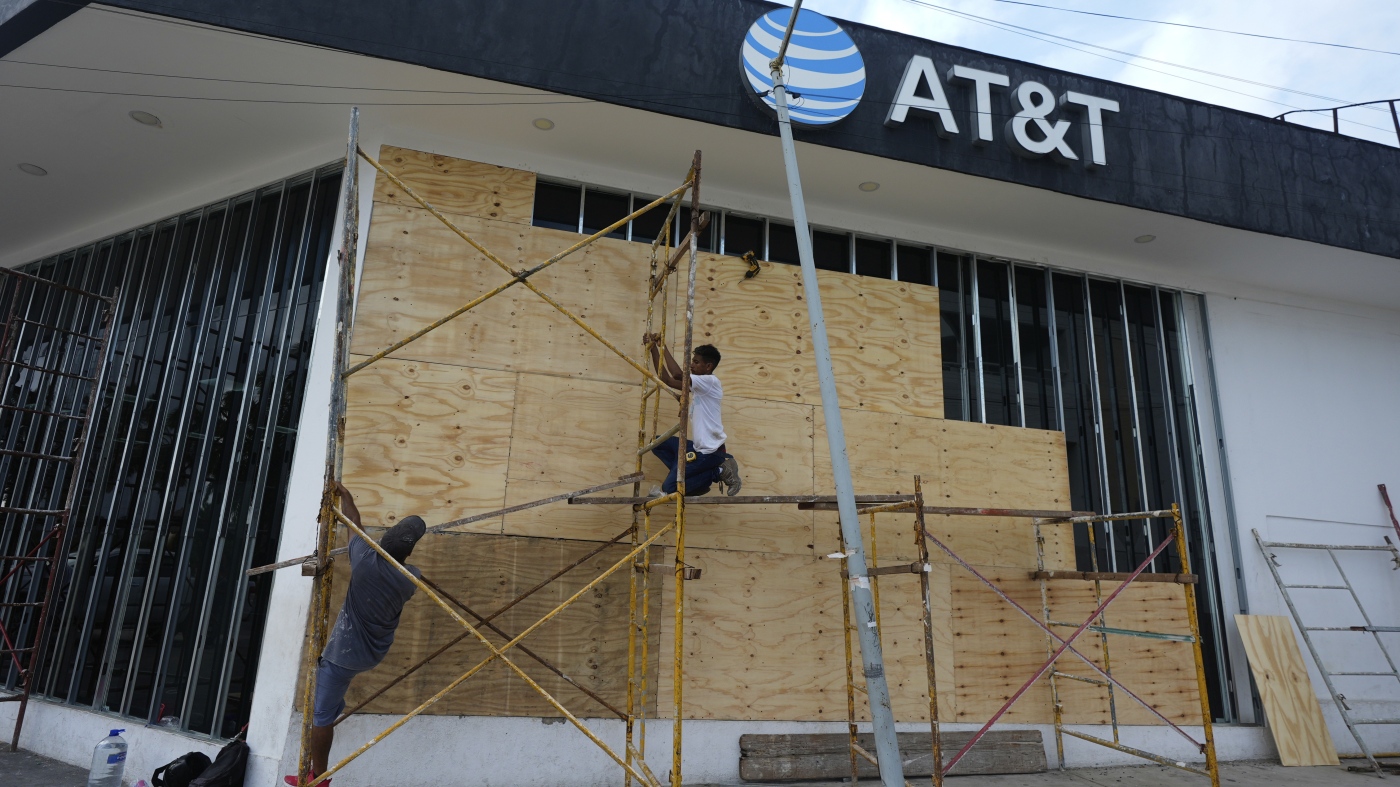The Rapid Intensification and Imminent Threat of Hurricane Erick
The Pacific coast of Southern Mexico is on high alert as Hurricane Erick rapidly intensified from a Category 3 to an “extremely dangerous” Category 4 hurricane in just a few hours. This swift escalation has triggered widespread preparations and urgent warnings along the coastline, with the projected impact expected Thursday morning. The situation is especially concerning given the region’s recent history with rapid intensification and devastating hurricane impacts.
A Timeline of Intensification: From Category 3 to a Major Threat
Hurricane Erick’s journey to becoming a major threat began on Wednesday when it strengthened to a Category 3 storm as it approached Mexico’s southern Pacific coast. However, the storm’s trajectory took a dramatic turn. Throughout Wednesday evening and into Thursday morning, Erick exhibited “explosive growth,” rapidly intensifying into a Category 4 hurricane. The U.S. National Hurricane Center (NHC) confirmed this escalation, repeatedly emphasizing the “extremely dangerous” nature of the storm. The speed of this intensification is a critical factor driving the urgency of the situation. The storm’s progression from a major hurricane to a potentially catastrophic one in a remarkably short timeframe has caught many off guard.
Understanding the Danger: Defining Category 4
A Category 4 hurricane is characterized by sustained wind speeds ranging from 130 to 156 mph (209 to 251 kph). These winds are capable of causing catastrophic damage, including significant structural damage to homes and buildings, widespread power outages, and the destruction of vegetation. Beyond the wind, the NHC warns of additional dangers: destructive winds near the point of landfall, dangerous storm surges, and the potential for devastating flash floods. The combination of these factors presents a severe threat to life and property, making the situation particularly alarming for residents in the projected impact zone.
Projected Impact and Vulnerable Locations
Initially, the projected path of Hurricane Erick pointed towards a broader stretch of coastline. However, late Wednesday, the forecast shifted, indicating a closer approach to Puerto Escondido in Oaxaca state. The storm’s center is now expected to impact a sparsely populated area of coastline situated between Puerto Escondido and Acapulco. Despite the relatively low population density in the immediate impact zone, the potential for widespread damage and disruption remains high. The threat extends beyond the direct landfall location, with the possibility of significant impacts further inland due to flooding and landslides. This broadened impact area underscores the need for comprehensive preparedness and response efforts.
Echoes of Otis: A Region Still Recovering
The looming threat of Hurricane Erick comes less than a year after Mexico’s Pacific coast was ravaged by Hurricane Otis in 2023. Otis, a Category 5 storm, inflicted catastrophic damage on Acapulco, resulting in over 50 fatalities and widespread devastation. The rapid intensification of Otis caught forecasters and residents off guard, highlighting the vulnerability of the region to quickly strengthening storms. The recent experience with Otis underscores the importance of preparedness and the potential for even more severe consequences if Erick maintains its intensity. The memory of Otis serves as a stark reminder of the destructive power of these storms and the need for robust evacuation and emergency response plans.
The Role of Climate Change in Rapid Intensification
The rapid intensification of Hurricane Erick is not an isolated incident. Forecasters are observing an increasing trend of storms undergoing similar rapid strengthening events. This phenomenon is strongly linked to climate change, which is warming ocean temperatures and creating conditions more favorable for hurricane development and intensification. Warmer waters provide more energy for storms, allowing them to strengthen more quickly and reach higher intensities. The increasing frequency of rapid intensification events poses a significant challenge to forecasting and preparedness efforts, as it reduces the lead time available to warn and evacuate vulnerable populations. This trend highlights the urgent need for climate action and resilience-building measures to mitigate the impacts of extreme weather events.
Current Status and Ongoing Preparations
As of the latest updates, Hurricane Erick remains an “extremely dangerous” Category 4 hurricane. Southern Mexico’s Pacific coast is actively preparing for the anticipated impact. Authorities are urging residents to heed evacuation orders, secure their homes, and stock up on essential supplies. Emergency shelters have been opened, and response teams are being deployed to the affected areas. The focus is on minimizing the risk to life and property and ensuring a swift and effective response in the aftermath of the storm. The storm’s movement is being closely monitored, and forecasts are being updated regularly to provide the most accurate information possible.
A Looming Crisis and the Imperative of Preparedness
Hurricane Erick represents a critical test for Mexico’s disaster preparedness systems. The storm’s rapid intensification, coupled with the region’s recent experience with Hurricane Otis, underscores the growing threat posed by increasingly powerful and unpredictable storms. The situation demands a coordinated and proactive response, prioritizing the safety and well-being of vulnerable communities. Beyond the immediate crisis, the events surrounding Hurricane Erick serve as a powerful reminder of the urgent need to address the underlying drivers of climate change and invest in long-term resilience measures to protect coastal communities from the escalating impacts of extreme weather events. The lessons learned from Erick, and from Otis before it, will be crucial in shaping future preparedness strategies and mitigating the risks associated with a changing climate.
The Pacific coast of Southern Mexico stands at a critical juncture. The rapid intensification of Hurricane Erick serves as a stark reminder of the increasing threats posed by climate change and the urgent need for robust preparedness and resilience measures. As the region braces for impact, the lessons learned from this storm will be invaluable in shaping a more resilient future. The time to act is now, to ensure that communities are better equipped to face the challenges of a changing climate and the increasingly powerful storms it brings.

